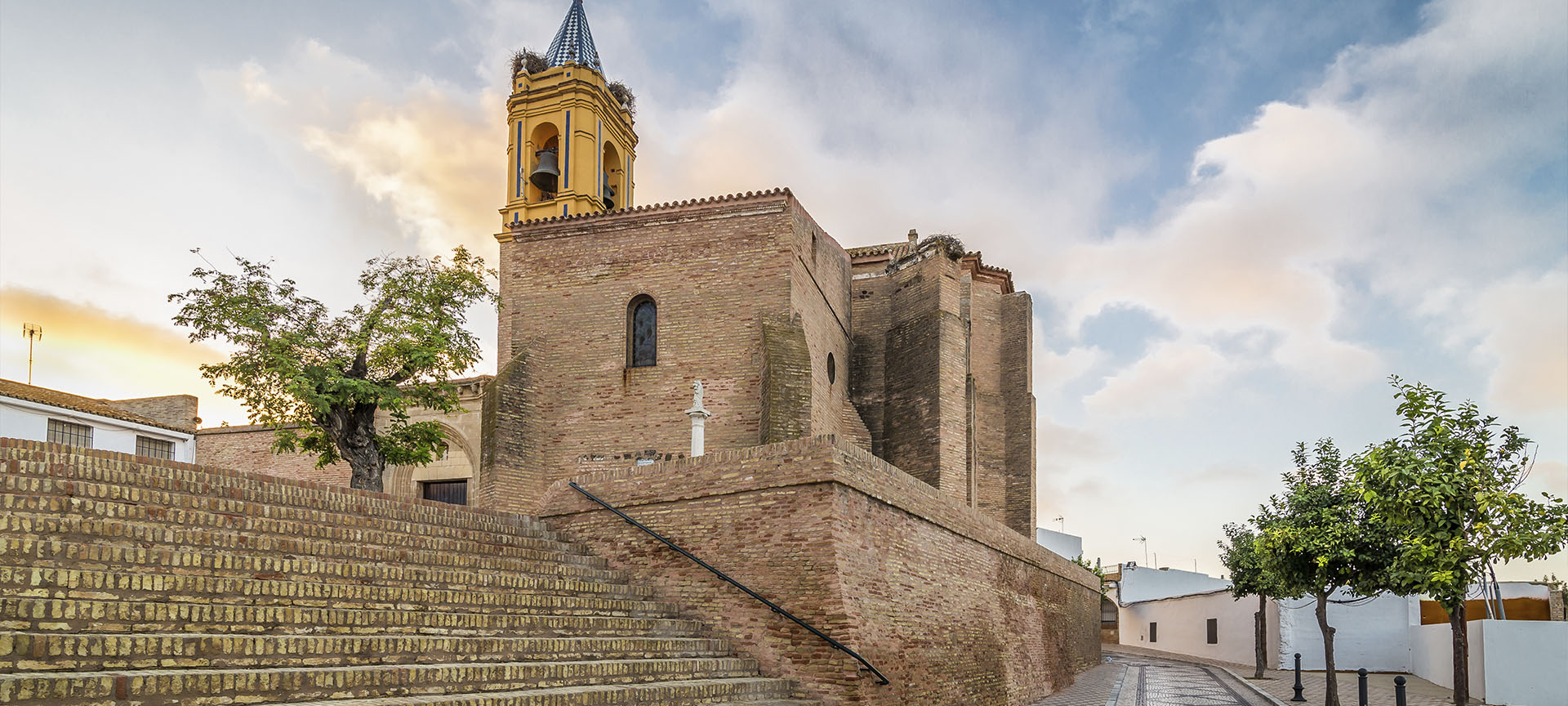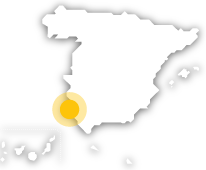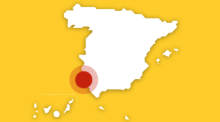
This town, of long seafaring tradition, was the cradle of the Discovery of America, since it was from its port that the three caravels set out in August, 1492, to arrive two months later at the remote and strange lands of the New World.
The port of Palos de la Frontera has lost some of the protagonism that it enjoyed 500 years ago, since it is nowadays situated inland, due to the 1755 Lisbon earthquake, which altered the coastline, and also, more recently, due to the construction of the docks that shelter the port of Huelva. Everything in this town recalls that 1492 adventure. Thus, in a small monolith that stands across from the Mudejar doorway of the church of San Jorge, from the 14th century, we see the engraved names of the seventy sailors from Palos (the Pinzón Brothers among them) who took part in the Discovery. In the town's main street we find the house that belonged to the Pinzón family, now restored, still bearing its coat of arms. In the outskirts, we find "la Fontanilla", a Mudejar fountain that was declared a National Monument, where Columbus supplied his caravels with water for the long journey. In the vicinity of Palos, on the banks of the Tinto river, we find the monastery of La Rábida, where Christopher Columbus stayed; inside we can see frescoes by painter Vázquez Díaz depicting scenes from the Discovery. At the Gothic church of La Rábida, the Virgin of Milagros is worshipped, as well as a 14th-century carving of Jesus on the Cross, one of the oldest in Andalusia.
Debe activar Javascript para poder utilizar este servicio
What to visit
Select from the list or hover over the map to find out about points of interest.
Activa JS
Travel plans for inspiring you





